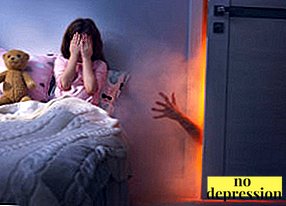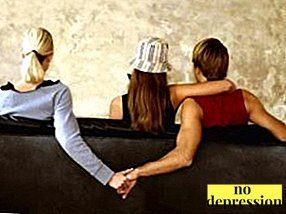AT psychology different stand out types of conflicts.
Accordingly, the most optimal ways of resolving them are selected.
What it is: the definition of

Which definition best fits the notion of conflict?
Conflict - relations between subjects, characterized by confrontation based on the divergence of views, motives, interests.
It can be interpersonal, intergroup, between a group and an individual.
it clash of interests and views, rejection of the other side, the struggle for survival and limited resources. This is a collision of oppositely directed targets.
Conflict is a way to identify contradictions, an impetus to the search for their solutions. These contradictions have personal significance for the participants of the interaction.
Conflict is viewed as competition. It becomes real when at least one of the parties recognizes its existence.
It can also be considered as the interaction of two objects, which have identified incompatible goals. These can be people, classes, social institutions.
Conflict is considered and dialoguewhen the parties directly express differences in their interests. What matters is the desire to damage one of the parties - moral, material, psychological, social harm.
The concept of conflict in this video:
Structural elements

Conflict has a certain structure, allowing to more fully determine its significance, urgency and resolution methods.
- An object. This includes the material, spiritual, social value, about which the interests of both parties intersect. Each of the warring actors seeks to seize him.
- Thing - actually, because of what disagreements, a problem, a source, a contradiction arose.
- Image of the situation - its display in the mind of the subject.
- Motives - Forces that encourage action.
- Positions parties.
- Subjects - participants, it can be separate individuals, groups.
- Strategy and tactics of reference.
- The outcome of the situation - what are the consequences, the results, as far as the participants realize and accept them.
Counted conflict conditions:
- space - where it unfolds;
- time - duration;
- socio-psychological - characteristics of the participants, their involvement, motives, ways of interaction, the degree of confrontation;
- social - whether various social groups are involved - professional, family, gender.

In a conflict situation stand out stages of development:
- subject - at this stage there are objective reasons for disagreement;
- interaction - a conflict develops, otherwise referred to as an incident;
- resolution - may be complete or partial.
Sociologists and psychologists in the search for solutions must take into account the structure, the number of participants, their motivation.
Stages of conflict - the table.
The structure of the conflict in this video:
Essence and classification
What are some conflicts? In sociology and psychology, conflicts are divided into natural and unnatural. The first appear by themselves, when there are contradictions between their own ideas and ideas about the situation of other people or groups.
Artificial are created for the realization and achievement of a specific goal. Sometimes used by individuals for stress relief.
Conflict is evolving process. It can progress, persist for a long time, change or end naturally. Sometimes it goes into a hidden stage, ready to flare up again.

In organizations, depending on the degree of employee involvement, conflicts are divided into horizontal, vertical, mixed.
There are emotional conflicts, when the cause is not an object, but concepts, requirements, attitudes of the subject.
Membersare usually not equal in rank. Incident, that is, an action that can arise on the initiative of one of the parties, is created intentionally, sometimes it occurs without a goal, for the sake of the conflict itself.
Conflicts are classified:
- on the sphere of manifestation - economic, political, ideological, family;
- by degree of tension - stormy, hidden, long-lasting, sluggish, rapid;
- by subjects - intergroup, interpersonal, between the individual and the group;
- by consequences - constructive or destructive;
- by subject - realistic, pointless.
The essence of any conflict is provoking changes, positive or negative.
Types and characteristics
- Ideological. The basis of their contradictions in attitudes, attitudes, principles and norms of behavior, attitudes. They can arise both in small social groups and in the scale of society.
- Economic. Caused by economic contradictions. The needs of one side can be solved with the help of the other side. This kind of conflict often occurs between individuals.
- Social and household. Contradictions arise on the basis of living conditions, the division of property, living together in one territory, the distribution of responsibilities, and the use of benefits.
- Family. The basis is disharmonious relations in a small social unit, the inability to make contact, to make a compromise in time or to avoid scandal, the choice of an unsuitable partner, personal characteristics of the participants in the interaction.
- Socio-psychological. At the heart of these conflicts are interactions between groups, clash of interests.
Plays a role psychological incompatibility, emotional rejection of the other side, pathological cravings, deviations in the sphere of sexual relations, the struggle for leadership.
- Psychological and pedagogical. They arise in the process of upbringing and education, when the requirements of teachers and students, parents and children collide.
- Accessories. It is expressed in the choice of a particular group, self-identification.

Effects
Consequences conflicts are divided into two large groups:
- constructive - suggest rational transformation, positive changes;
- destructive - destructive organization, group, personality.

Some authors give the following classification:
- functional, suggesting the search for promising alternatives, making it possible to effectively resolve differences, positively affecting the development of an individual;
- destructive - goals are not achieved, the needs of the individual are not met.
According to the impact of the conflict can be divided into negative and positive.
W. Lincoln highlighted the following positive consequences of a conflict situation:
- uniting people with the same direction - like-minded people;
- accelerating the process of self-awareness;
- discharge, discharge of stress, irrelevant matters at the same time go into the background;
- prioritizes;
- helps out of emotions;
- draws attention to proposals that need discussion;
- helps to establish working contacts;
- under the influence of the situation a certain set of values is approved;
- there is a search for the best ways to prevent conflicts.

TO negative consequences concerns:
- threatens the social system;
- undermines the confidence of the parties;
- tends to deepen, expand;
- changes priorities, jeopardizes interests;
- impedes rapid change;
- people are subject to statements made publicly.
Regarding this or that conflict, we must proceed from the need to get a certain result and try to translate it into a positive course as quickly as possible.
Forms and typology of conflict situations
Identify the main types of conflict situations. There are four of them:
- Intergroup. Occur within organizations between small groups, between large social groups.
- Personality-group. When a separate individual and group enters into confrontation.
- Interpersonal. In this case, members of the group appear incompatible goals, behavior patterns, motives.
- Intrapersonal. Clashes occur within the person himself, when there are contradictions between the expectations and the demands of the external environment.

The varieties of conflicts include intriguewhen, on the one hand, there is an unfair action that benefits the initiator.
They encourage individuals or a group to take certain actions and harm other people or a social group.
Types of conflict - examples:
Types of personal behavior
In a conflict situation, people may exhibit different behaviors. It depends on the personality, experience, the desire to get a certain benefit, to achieve the desired goal.
Types of behavior briefly:
- compromise - search for possible concessions on both sides;
- device - one of the parties refuses to express their interests in favor of the interests and demands of the other party;
In this case, you have to adapt, rebuild, humble yourself.
- cooperation - there is a search for a common benefit, sometimes it takes several steps to go until a better solution is found;
- ignoring - the person does not want to enter into conflict, ignores the demands of the other party, but as a result of disagreements becomes more and the tension increases;
- rivalry - an active form of interaction, the subjects insist on their own, striving for a common goal, but at the same time do not want to give up the primacy. Here there are various options - someone will win, beating his opponent, or you have to look for a compromise.

Conflict Management - it is a targeted impact on the behavior of participants and the dynamics of the situation.
The modern point of view considers that in some situations conflicts are desirable.
This stimulates the development of the system. At the same time, provoking conflicts, we must be able to keep them under control and direct them in the right direction.
Conflictology - This is a whole branch of psychology. She is constantly exploring, improving methods of managing situations related to collective and personal differences. This allows you to find the most optimal and painless ways to resolve conflicts.
5 types of behavior in the conflict in this video:



